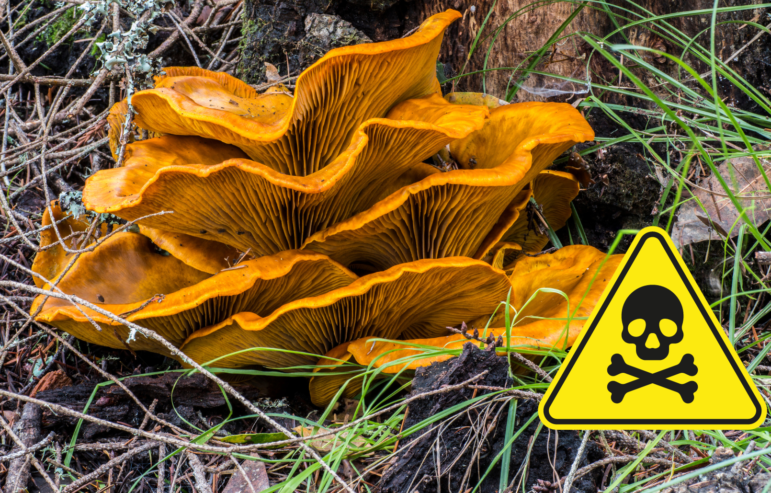A mushroom nearly big enough to seat a hookah-smoking caterpillar comfortably will be California’s official mushroom beginning in 2024 thanks to a new bill signed by the governor.
The Golden Chanterelle, or Cantharellus californicus, is a yellowish “monster chanterelle” that is the largest in the world. The Bay Area Mycological Society says the mushroom can “feed a family of four — with leftovers!”
The mushroom was first described in 2008 and grows on the ground under live oaks, where they are quite content to produce spores over a period of weeks or months, according to BAMS, “growing ever larger and more complex in shape over time,” the organization says on its website.
And though foragers prize them, harmful fungi-ingesting insects steer clear, giving them another chance to thrive. They also seem to be shunned by squirrels and wild pigs, according to BAMS.
Dangerous doppelganger
But every rose has its thorn, as they say, and every mushroom has its doppelganger that may be poisonous. In the Golden Chanterelle’s case, this is Jack-o’-lantern mushroom, or Omphalotus olivascens. Foragers beware.

According to the bill’s text, we have a state flower and tree, so it’s time to recognize a fungus.
“Mushrooms are important for both wildlife and people,” reads the bill. “Their extensive belowground networks nourish forests and grasslands via symbiotic connections with plant roots. They decompose dead wood, improve groundwater quality and quantity, store carbon in soil, and play a critical role in climate resilience and healthy soils.”
The bill was introduced by state Assemblymember Ash Kalra, D-San Jose.
For intrepid wannabe mycologists, look for our new state mushroom after fall and winter rains.
Flip side of foraging
Spores and mushrooms are increasingly popping up with winter rains and the East Bay Regional Park District is reminding residents that some fungi are best appreciated for their beauty, not taste.
Of particular concern to both people and pets: the death cap (Amanita phalloides) and the western destroying angel (Amanita ocreata).
Both of these mushrooms contain amatoxins, which are molecules that are deadly to most animals. Symptoms don’t appear until up to 12 hours later and include extreme gastrointestinal distress that progresses to liver and kidney failure to anyone who ingests them.

